To store flour long term, seal it in a mylar bag with oxygen absorbers. You can also store it in a freezer.
A popular myth is that flour doesn’t go bad. Well, it’s not true- flour is just non-perishable, meaning that it has a long shelf-life and doesn’t necessarily need to be stored in the refrigerator. However, it can still spoil if not cared for correctly.
In this article, I will cover some techniques and tips on how to store flour long-term to prevent bugs and mold and essentially triple its shelf life.
Note: The process for storing every kind of flour, including rice flour, whole wheat flour, bread flour, almond flour, and refined flour, is the same. Thus, you can use these tips to store all types of flour, oat, or other grains you have in your home.
3 Main Things That Make Flour Go Bad
Flours have natural oils in them, and when exposed to air or moisture, these oils start oxidizing, losing its freshness and leaving the flour stale, musty, and rancid over time.
Apart from oxidation, here are other things that could spoil and contaminate your flour:
1. Mold

Flour can catch mold when in contact with air and moisture, giving it a musty, sour smell and giving your baked goods a bitter and moldy flavor.
Eating moldy flour can also be harmful to health. Research shows that mold in some foods can produce harmful poisons called mycotoxins, which can cause breathing issues, vomiting, and diarrhea even when cooked.
Once there are signs of mold, just removing the moldy spots won’t help as mold has probably spread through the whole bag of flour, leaving it inedible. That is why the storage method below will stress the importance of keeping it away from moisture, dampness, and water to prevent mold.
2. Flour Bugs or Pantry Weevils
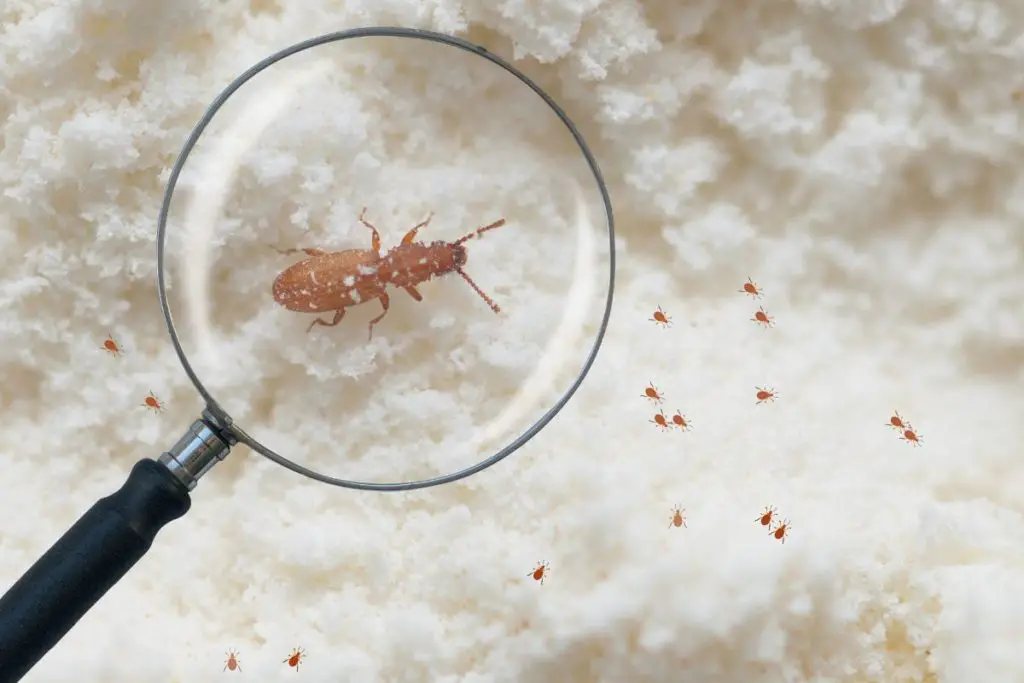
It is not just flour but also breakfast cereal, cake mixes, and even rice and pasta that are at risk of attracting these tiny bugs. These include rice bugs, wheat bugs, pantry weevils, and flour worms that can get attracted to the flour.
Depending on where you get your flour from, there may already be insect eggs in them as the flour could have been contaminated during the storage, or the eggs survive the milling process.
But these bugs can also find their way into your kitchen via gaps, cracks, holes, and gaps of your home, and the flour that is not stored correctly will be an easy target.
These tiny weevil eggs are impossible to notice if in your flour. But after the eggs have hatched, you may notice things like cobweb-like coating, worm-like creatures, molted weevil skins, carcasses or baby weevils, weevil poop, or foul odor or funny taste.
Although weevils are not as dangerous as mold, eating or cooking with contaminated flour is still NOT recommended. You should remove it from your kitchen and give your cupboards and the whole kitchen a good clean.
3. Absorbed Smells
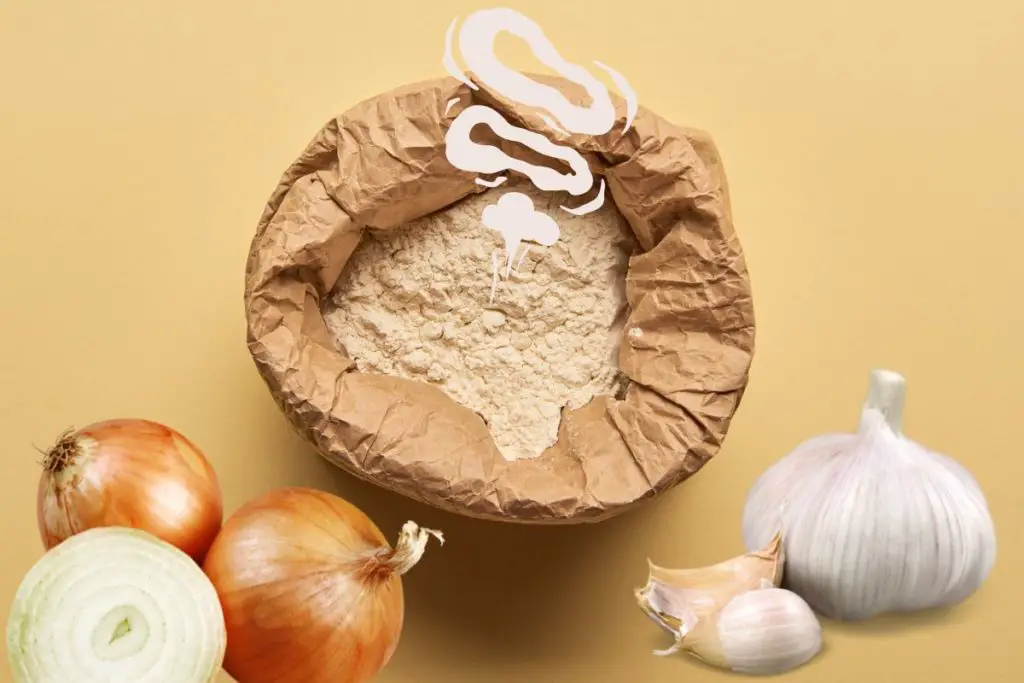
Flour is like a sponge when it comes to absorbing odors and smells. It can easily absorb the smell of the things next to it. Especially if not properly sealed, don’t put it close to food like onions, ginger, garlic powder, etc. These items will give off a very strong odor which may not go away even after cooking or baking.
How To Tell If Flour Has Gone Bad?
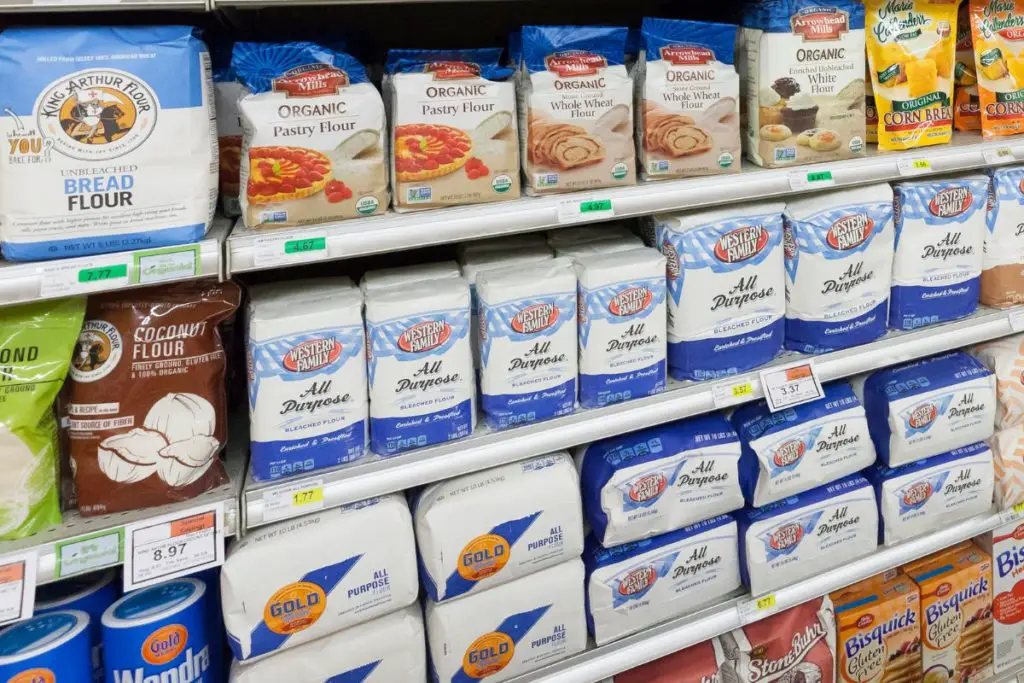
Buying fresh flour is the prerequisite to being able to store it long-term. And the best way to check for the freshness of flour is by smelling it.
Fresh flour gives a neutral smell, which can be slightly nutty. It shouldn’t be bought or used if it smells rancid, sour, or musty.
Often, in supermarkets, the flour is well packaged, but you may still be able to smell it if it’s giving off a foul odor. If not, then you can check the ‘Best Before‘ date on the package and smell and check for mold and insects as soon as you get home.
Can Flour Be Used After the Expiry Date?
Flour bags are often labeled or stamped with the ‘best before’ date. Many people confuse it for the expiry date.
The ‘Best Before’ date (sometimes shown as BBE or best before end) is the date until which food maintains its best quality inside the packet. So, it is not so much for the safety but rather the quality of the food product.
On the other hand, the expiry date is the date from which the food can no longer be used.
Now, given that flour has the best before date, it can be used even after the best before that has expired, as long as you store it appropriately and there are no signs of spoilage that I mentioned above.
3 Ways To Store Flour To Keep It Fresh And Prevent Bugs
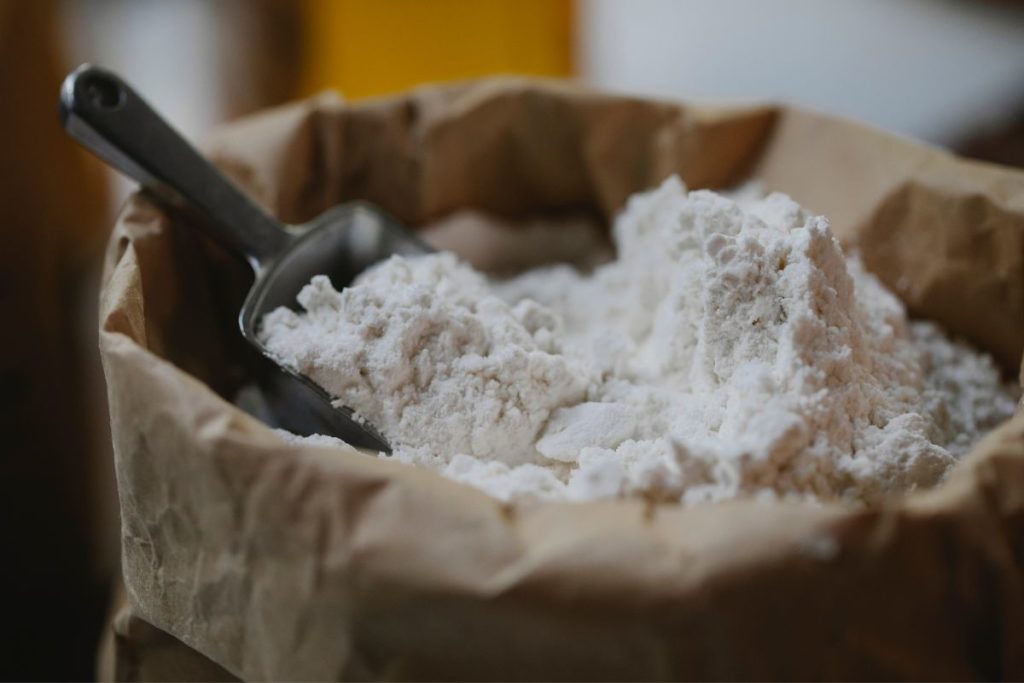
There are a few different ways to store flour long-term to keep it fresh and prevent bugs and mold. One way is to store it in an airtight container in a cool, dry place, away from moisture and heat. Another way is to freeze it. You can also store flour in the refrigerator or even the freezer.
Here are different flour storage methods based on how long you want to keep it fresh.
1. In Mylar Bags With Oxygen Absorbers
The Best Way for Long-Term Storage.
Mylar bags are absolutely great for long-term food storage that seal their content from moisture, bugs, and oxygen. In other words, they protect your flour from everything that can ruin it, giving it a shelf life of more than ten years.
If you don’t have a vacuum sealer to vacuum seal your mylar bags, you can use oxygen absorbers, which are little packages that can decrease the amount of oxygen inside the mylar bag, helping further to conserve the flour.
The Mylar bags below that I like to use are zipper resealable as well as heat sealable and already come with oxygen absorbers.
TAP ON IMAGE TO VIEW PRICE
Here is a step-by-step method on how you can store flour in a mylar bag:
Things You Need
- Mylar bag
- Oxygen absorber or a vacuum sealer
- Bucket (Go for one of those food-grade buckets)
- Flour
- Bay leaves
- Paper towel
- An iron
- Protective gloves
- A jar to store remaining oxygen absorbers
The Steps
- Step 1: First, ensure you have all the materials needed because you must seal everything quickly after opening the oxygen absorbers.
- Step 2: Wear your protective gloves. This is a very important step since the edges of mylar bags are very thin and sharp and could cut your skin.
- Step 3: Put the bay leaf in the mylar bag. This will help to avoid pests.
- Step 4: Open the oxygen absorber and place it inside the bag.
- Step 5: Pour in the flour. Leave about 4 to 5 inches of space on the top.
- Step 6: The empty space on the mylar bag will have some flour stuck on it. Wipe the flour off with a dry paper towel.
- Step 7: Run an iron on the top to seal the bag (or use a zipper or a vacuum sealer if you have one). Put it inside the bucket, and cover the bucket with the lid.
- Step 8: After 48 hours, check to see if the oxygen absorber has sucked in all the air. If not, you will need to repackage again.
Things to Note
- Label the bags with the date and what is in them. This will help you know the content of the bag without opening it.
- Put only one food item in one bag.
- You don’t need to store the bag inside the refrigerator. Just put it in a container with a lid and keep it in a cool place, preferably in the basement or a pantry.
- Mylar bags with oxygen absorbers are made for long-term food storage. Don’t use them if you need to open the package frequently for daily cooking.
Can You Put Sealed Mylar Bags Directly on the Floor?
It’s not recommended since rodents can easily puncture the bag. Furthermore, the temperature difference between the floor and the bag can create condensation inside the bag. Store them in the bucket, cupboard on the shelf.
Related Post: 20 Innovative Ways To Keep Food Fresh Longer!
2. In the Freezer
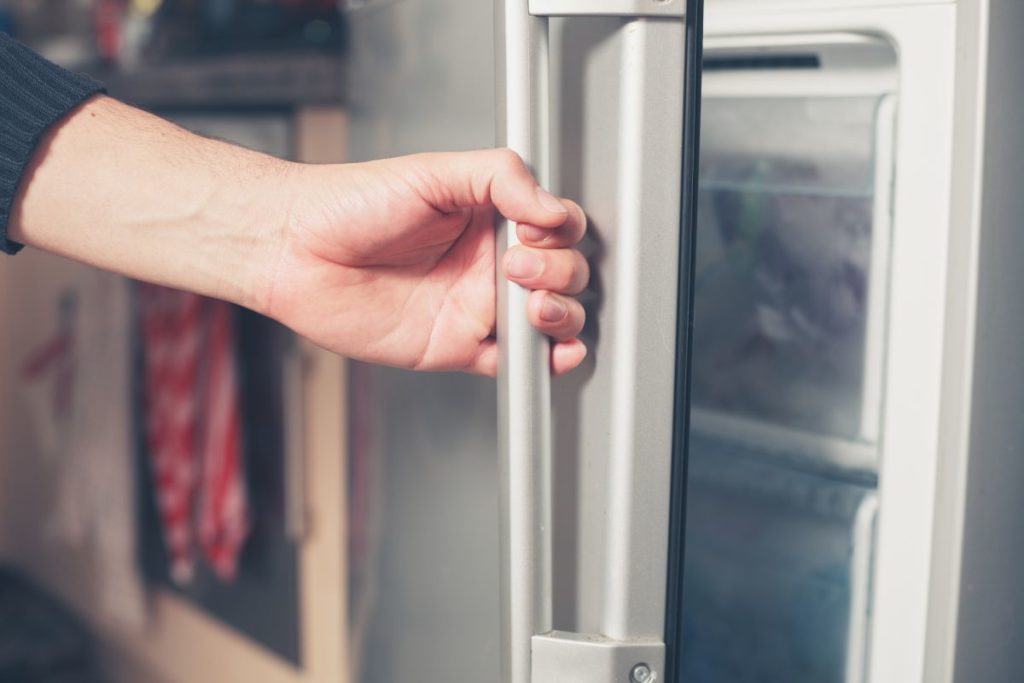
The flour will stay intact for up to a year when stored in the freezer. This is because the freezer prevents any kind of insect infestation and oxidation from happening.
In addition, the cold temperature inside the freezer will also kill insect eggs and germs.
To store, just place the flour in an airtight, freezer-safe bag, mylar bag, or container and put it in the freezer. Also, keep it away from the freezer door- the light there can also cause oxidation.
TAP ON IMAGE TO VIEW PRICE
How To Thaw Frozen Flour?
Before using, remove the flour from the freezer and let it come to room temperature. Keep it inside the bag or container to avoid condensation. If you don’t let it come to room temperature, it could negatively affect the texture of your baked goods.
It could happen that flour is slightly moist or damp after thawing. In this case, spread it on a baking sheet and heat it in an oven to 200°F (93°C). Bake it for 15-20 minutes on a baking sheet, then remove it from the oven and allow it to cool completely.
Another option is to make your dough straight away.
Does Freezing Affect the Taste and the Texture?
No, freezing flour does not affect the taste and the texture; as long as you allow the flour to get to room temperature, you won’t notice any change in the taste or the texture of your baked goods.
3. In Airtight Flour Container
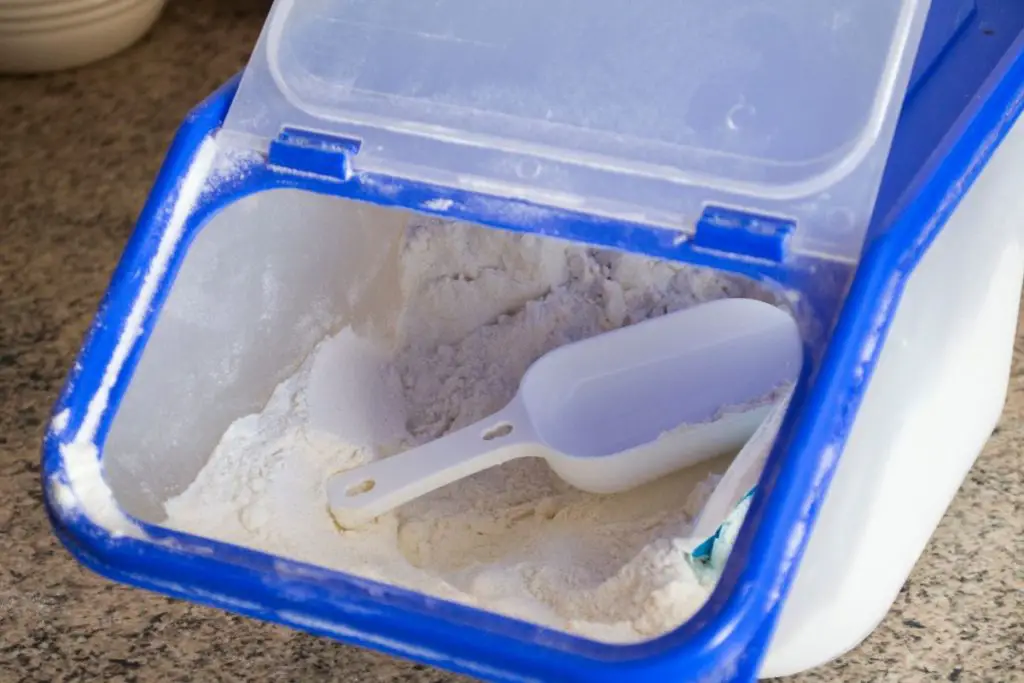
Flour can stay fresh for about six to eight months in its original paper or cardboard packaging. Especially when opened, which can leave it vulnerable to moisture, oxygen, bugs, and pests.
If you use flour often for cooking and baking, an easily accessible air-tight glass, metal, or BPA-free plastic container is the best option to extend the shelf life for short-term storage. With this, your flour can last up to one year.
TAP ON IMAGE TO VIEW PRICE
Make sure to store the container in a cool and dry place. By the way, you can also use ziplock bags. Tupperware, Progressive International (like the one above), Rubbermaid storage containers, or mason jars with a good lid are good options.
Tip: Similar to Mylar bags, you can also use Oxygen Absorber in your plastic containers or mansion jars. Just make sure that your container or jar is completely airtight.
5 Things You Can Do With Spoil or Expired Flour
If the flour has developed an odor or a gone well past its used-by-date, or you have found signs of bugs in it, you don’t have to throw it away immediately. Here are some creative uses of it:
- Use it as compost.
- Use it as a barrier in the pathway of ants. Ants can’t cross a line made with flour.
- Use expired flour to make play dough for your kids.
- Make a mache glue, mix equal parts of flour and water and mix well to remove the lumps.
- Apply the flour to the stained clothes to use it as a stain remover.
Frequently Asked Questions About Storing Flour
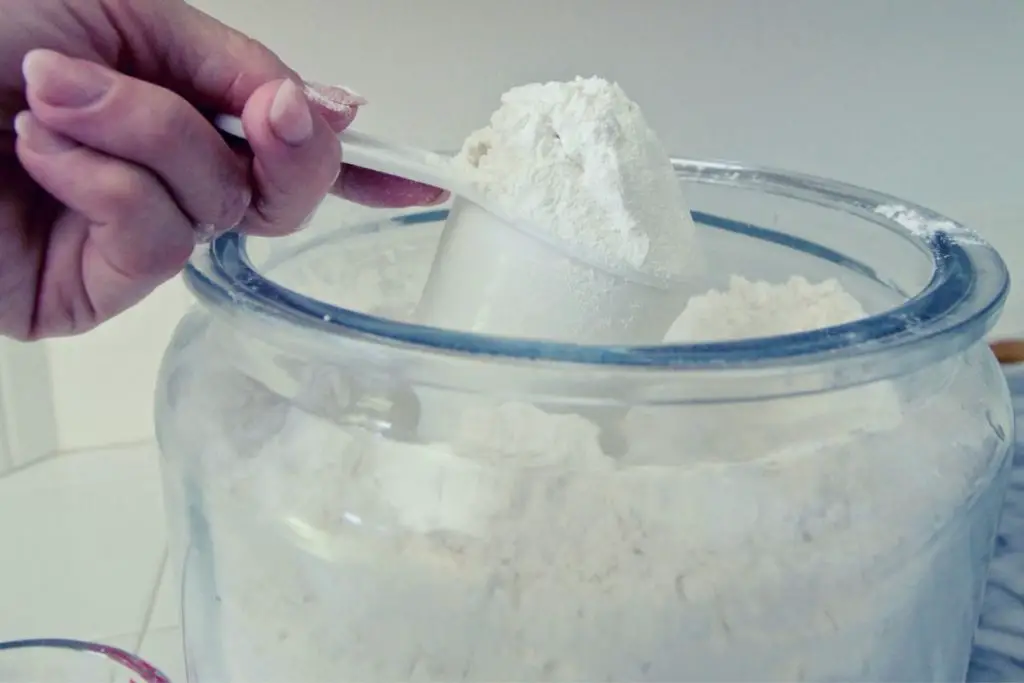
What Is the best temperature to store flour in your kitchen or pantry?
The best temperature to store flour in your kitchen or pantry is cool room temperature around 68°F (20°C) and no more than 75°F (24°C). In these conditions, flour should keep for up to six months in its original, unopened package.
How many oxygen absorbers for flour?
The 6-quart (1.5 gallons) jar or container is a good size for 5 pounds of flour. You would need one 1000cc oxygen absorber to empty a 1.5-gallon container of oxygen. If you fill the jar, bag, or container with dense foods like wheat, flour, or grains, it will take a 500cc or higher oxygen absorber to soak up all the oxygen.
Can you use too many oxygen absorbers?
The number of oxygen absorbers you need will depend on various factors, including the size of the container and the type of food being stored. In general, it is recommended to use the required amount for the volume of your container. However, if you are unsure how many oxygen absorbers are necessary, it is better to add a few more than not enough, as there is no danger or effect for food in adding too many.
Can you store flour in Ziplock bags?
Although mylar bags or plastic containers with an airtight lid are the best for long-term storage, a large and durable Ziploc bag with a leakproof double zipper seal and stand-up base will keep the flour safe from bugs and moisture.
How long is flour good for after the expiration date?
Regular flour has printed best before date average of 6-8 months. If no special storage methods are applied, then it is best to consume the flour in that time frame. However, if you store the flour in vacuum sealed mylar bags, in the freezer, or in air-tight storage containers with oxygen absorbers, the flour is good and safe to consume years after its official expiry date.
Related Post: What Food To Store For An Emergency? – According To Statistics And Shoppers.
In Summary
If you are planning to stock up on flour for the long term, then make sure to pack it airtight and store it in a cool, dry place away from sunlight, moisture, bugs, and rodents. You can also store it in the freezer if you want to keep it for a more extended period of time. Just make sure to thaw it out before using it in your baking recipes.



